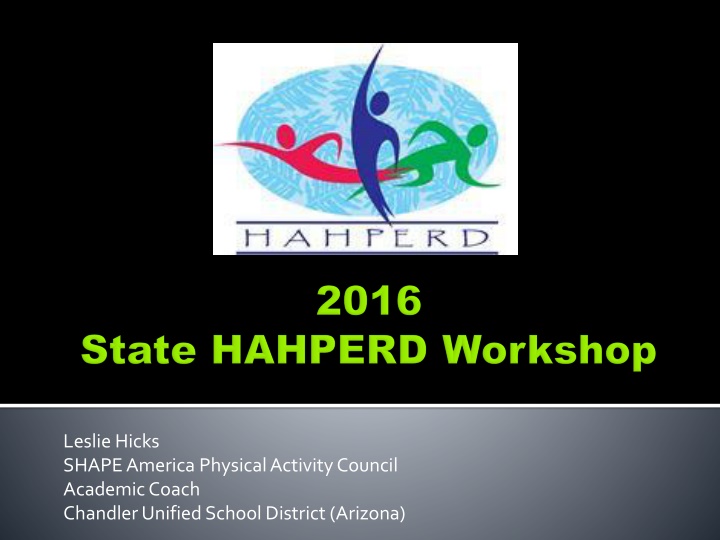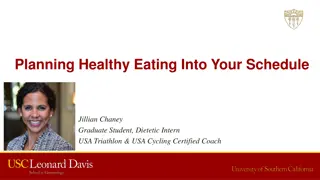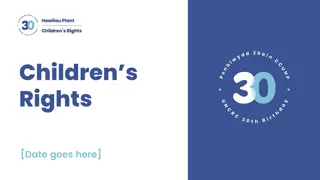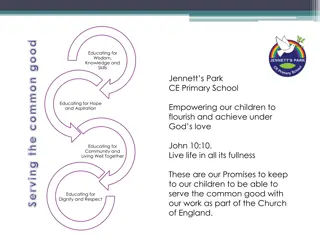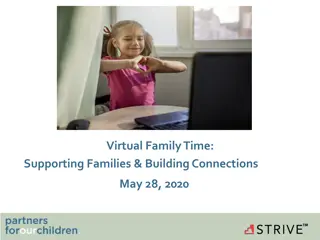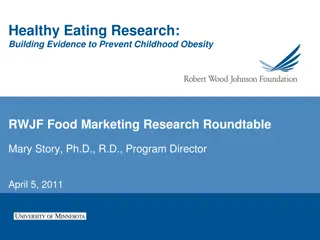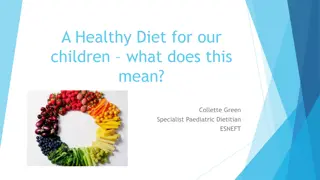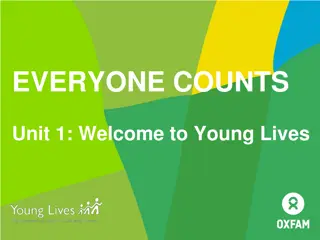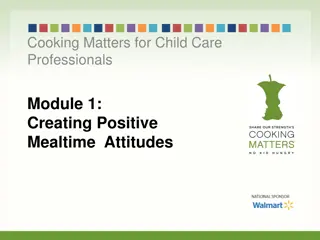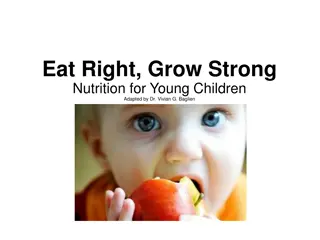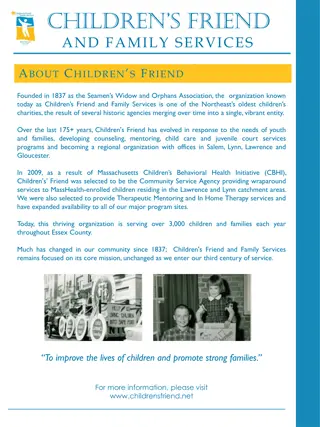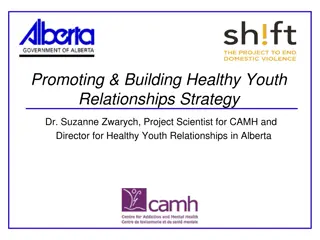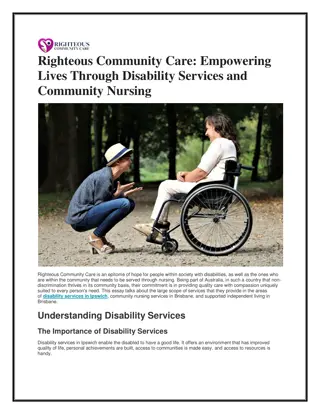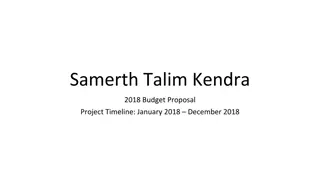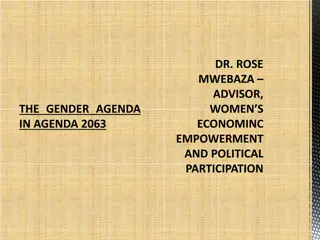Empowering Children for Healthy Lives
In your role as a health and physical educator, you can deliver the benefits of living a physically active and healthy life. By uniting as a profession, we can garner public support for health and physical education, benefiting both current and future generations. SHAPE America is dedicated to empowering all students to lead healthy, active lives through effective health and physical education programs like the 50 Million Strong by 2029 initiative.
Download Presentation

Please find below an Image/Link to download the presentation.
The content on the website is provided AS IS for your information and personal use only. It may not be sold, licensed, or shared on other websites without obtaining consent from the author.If you encounter any issues during the download, it is possible that the publisher has removed the file from their server.
You are allowed to download the files provided on this website for personal or commercial use, subject to the condition that they are used lawfully. All files are the property of their respective owners.
The content on the website is provided AS IS for your information and personal use only. It may not be sold, licensed, or shared on other websites without obtaining consent from the author.
E N D
Presentation Transcript
Leslie Hicks SHAPE America Physical Activity Council Academic Coach Chandler Unified School District (Arizona)
SHAPE America Councils SHAPE America Councils Physical Education Physical Activity Health Education Research
Our Charge Review existing programs, products, services and activities in relation to the strategic plan and recommended continuation, revision or elimination Assess proposal submissions for the SHAPE America convention Brainstorm potential new programs, products and services Facilitate the work of SHAPE Task Forces
Physical Education Council Current Task Force Projects with council liaison Appropriate Uses of Fitness Measurement (Jayne Greenberg) User Friendly Standards (Theresa Purcell Cone) Recess Position Statement (Brian Devore) Standards Based Grading Progress Report (K. Andrew R. Richard) Waivers and Exemptions Task Force (Terri Drain) Student Growth Measures Task Force (Jeana Haag) Current Task Force Projects with council liaison Starting an Adapted Physical Education Program FAQ (Kristi Roth)
50 Million Strong by 2029
With approximately 50 million students currently enrolled in America s elementary and secondary schools (grades pre-K to 12), 50 Million Strong by 2029 is SHAPE America s commitment to empower all children to lead healthy and active lives through effective health and physical education programs. http://www.shapeamerica.org/prodev/50milli on.cfm
In your role as a health and/or physical educator, you are uniquely poised to deliver the benefits of living a physically active and healthy life. By coming together as a profession, we can solidify public support for health and physical education as benefitting current and future generations.
How many students do you teach each year?
Policy and Environment Curriculum Appropriate Instruction Student Assessment http://www.shapeamerica.org/standards/guidelines/upload/Physical-Education-Program-Checklist.pdf
National Standards for K-12 Physical Education
National Standards & Grade-Level Outcomes for K-12 Physical Education (2014)
STANDARD 1 The physically literate individual demonstrates competency in a variety of motor skills and movement patterns. STANDARD 2 The physically literate individual applies knowledge of concepts, principles, strategies and tactics related to movement and performance.
STANDARD 3 The physically literate individual demonstrates the knowledge and skills to achieve and maintain a health-enhancing level of physical activity and fitness. STANDARD 4 The physically literate individual exhibits responsible personal and social behavior that respects self and others.
STANDARD 5 The physically literate individual recognizes the value of physical activity for health, enjoyment, challenge, self-expression and/or social interaction.
Learning Environment Instruction Strategies Curriculum Assessment Professionalism http://www.shapeamerica.org/standards/guidel ines/upload/Appropriate-Instructional- Practices-Grid.pdf
Establishing the Learning Environment Exercise as Punishment Safety Diversity Equity Inclusion Competition & Cooperation
Expectations for Student Learning Class Organization Class Design Learning Time Maximum Participation Teaching/Learning Styles Teacher Enthusiasm Success Rate Teacher Feedback Technology Use
Productive Motor Skill Learning Experiences Concept Knowledge Regular Participation Developing Health-Related Fitness Self-Responsibility & Social Skills Valuing Physical Activity Interdisciplinary Instruction Special Events
INAPPROPRIATE PRACTICE The same lesson plans and activities are used for all grade levels. Teachers teach all students the same skills year after year. Activities are the same for all grade levels. APPROPRIATE PRACTICE Teachers adapt their lessons for different classes within and between grade levels. Teachers design progressions that allow students to build on previously learned content and skills by focusing on lifetime activities. Teachers design progressions that allow students to build on previously learned content and skills, by focusing on lifetime activities. The same games and activities are used for all grade levels through- out the year.
Assessment Use Variety of Assessments Fitness Testing Testing Procedures Reporting Student Progress Grading Program Assessment
Professional Growth Professional Learning Community Advocacy
4 Essential Components Policy and Environment CurriculumAppropriate Instruction Student Assessment http://www.shapeamerica.org/explorepe.cfm
Evaluate. How is your school moving? The assessment toolwill help you see where you already shine and where you need to step it up.
Whats on your to do list? ESSA
The U.S. Congress passed the Every Student Succeeds Act (ESSA) in December 2015, reauthorizing the Elementary and Secondary Education Act (ESEA) of 1965. President Obama signed the bill into law on December 10.
Government Authority the goal was to strike the right balance between the respective roles of federal, state and local governments in formulating education policy. Standards and Assessments States must still adopt challenging standards for academic subjects. Teacher Requirements Teacher and Principal Evaluation Core Subjects vs. Well-Rounded Education Consolidation of Programs
Teacher Requirements States have the authority to set their own teacher requirements and licensure standards. Teacher and Principal Evaluation States and school districts must develop and implement teacher and principal evaluation systems that are based in part on evidence of student achievement. Core Subjects vs. Well-Rounded Education Consolidation of Programs
Core Subjects vs. Well-Rounded Education While school health and physical education were not included in No Child Left Behind which led to restricted access to program funding they are included in the ESSA definition of well-rounded education. Consolidation of Programs Programs have been consolidated in ESSA into a large block grant of funds that will be distributed to states.
School health and physical education are identified as part of a student s well-rounded education. The term well-rounded education replaces the term core subjects used in previous authorizations of the Elementary and Secondary Education Act. Being part of the definition of a well-rounded education puts school health and physical education on a level playing field with other academic subjects.
School districts will be able to access funding from Title I, Title II and Title IV through their state department of education. The process for accessing these funds is still being developed by the Department of Education with oversight from Congress.
